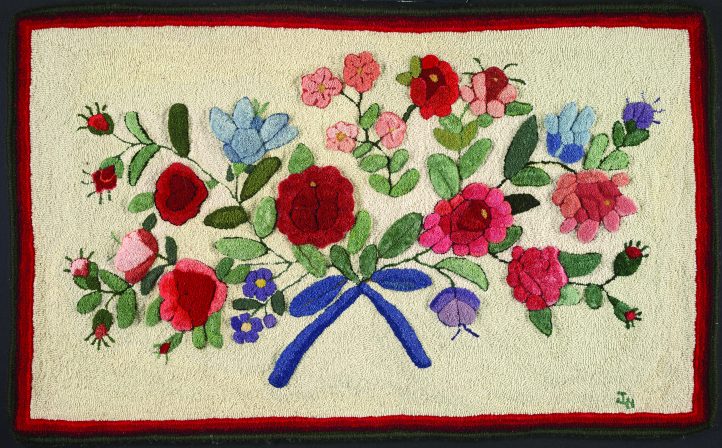
The Waldoboro Museum Rug, 301/2″ x 241/2″, #3- and 4-cut wool on fine cotton. Designed and hooked by Jacqueline Hansen, Scarborough, Maine, 2010. IMPACT XPOZURES
It was love at first sight when I discovered my first Waldoboro rug at an antique auction here in Maine. As a rug teacher and antique collector, I knew I was looking at something very special. Waldoboro rugs were “hoved” (hooked higher than normal) and clipped to form a high pile in a three-dimensional manner. This technique gives a luxurious texture to the rugs; sometimes you can find pile as high as three inches.
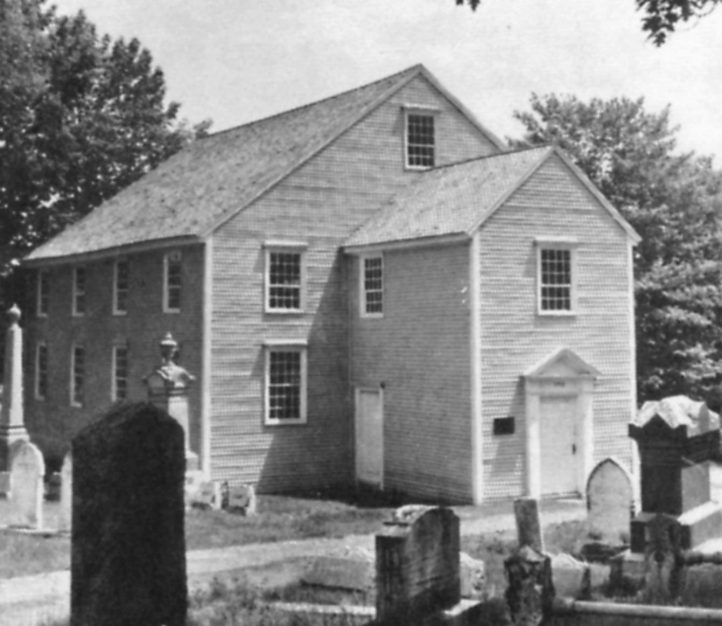
The German Lutheran Society still opens the Old German Meeting House in July and August for special events. The beautiful original Waldoboro rugs may also be seen at their museum, which is open to visitors in July and August.
Waldoboro is a village on the Medomak River and Muscongus Bay in Maine. This coastal town was settled by German immigrants in 1740. Large land grants all along the Atlantic seaboard were given at that time by English kings. General Samuel Waldo was one of the recipients. He recruited many of his fellow Germans to help him with the settlement in the new country. He felt that these people were of great strength of character, having overcome many hardships in Europe.
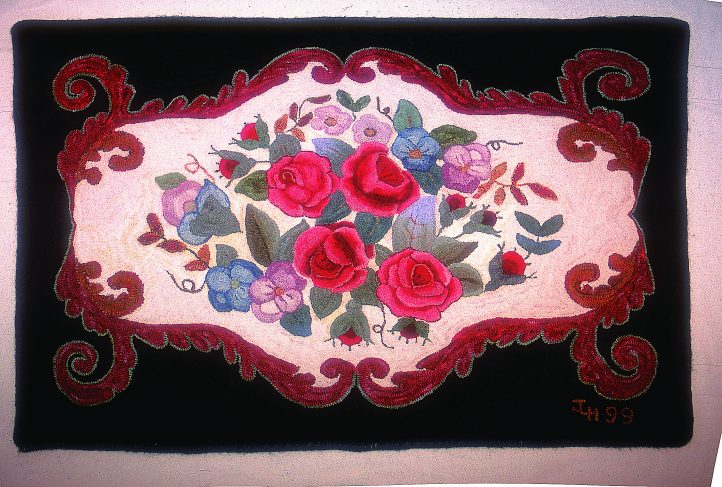
Roses and Pansies Antique, 27″ x 39″, #4-cut wool on fine cotton. Designed and hooked by Jackye Hansen, Scarborough, Maine, 1999. BERNADETTE BOLDUC PAPI. I used red scrolls in my first Waldoboro design. This design was shown as a modern interpretation of Waldoboro rugs at the American Textile History Museum in Lowell, Massachusetts, in 1999 as part of the exhibit Art Underfoot.
Through the diversity of the abilities of these people came the ultimate success and growth of the village. During the 1770s Waldoboro was the second largest shipping and receiving port in the country and was known for building the first three-masted schooner in the new country. Waldoboro’s farmers raised sheep, making it also famous for its many wool mills. In those days, women gathered to talk and hook their rugs at the Old German Meeting House.
Waldoboro-style rugs got their name from the rugs hooked by the ladies of Waldoboro. The finest examples of this type were hooked there between 1870 and 1885. Today, the word “Waldoboro” is used to describe rugs hooked from the mid-1860s through the early 1900s. We use it today to refer to sculpted rug hookings.
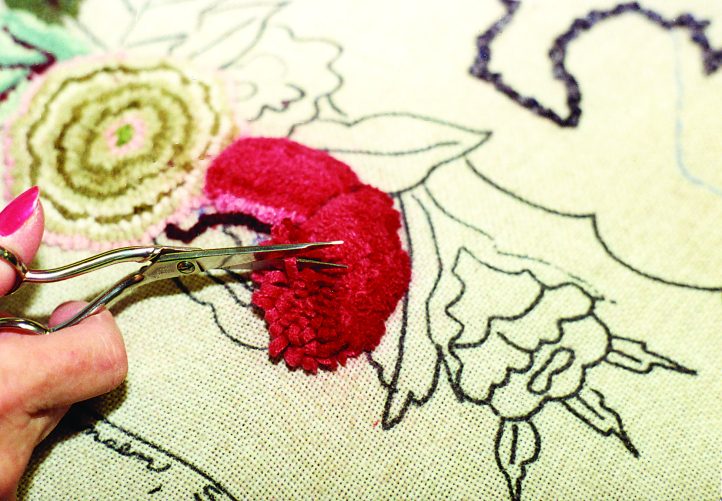
Clipping the loops gives Waldoboro rugs their signature three-dimensional look. BONNIE GEOSTLEY
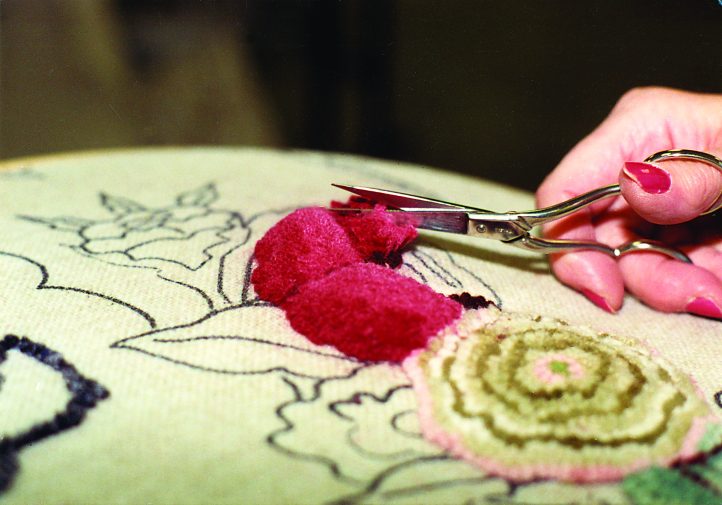
Clipping the loops gives Waldoboro rugs their signature three-dimensional look. BONNIE GEOSTLEY
Waldoboro rugs have two distinct features. Foremost is the technique of clipping the loops to create a three-dimensional area within the design. The other feature is the wreath-like border or scrolls on many of the rugs. The leaf is shown flat on one side of the vein and then turns toward the center of the design. Even in today’s patterns, when a border is an unbalanced scroll, it frequently is called a Maine Scroll, which echoes back to the Waldoboro designs.
All of the original Waldoboros were hooked on their own homespun linen backings, a very fine weave. The artists used natural dyes of berries, bark, vegetable skins, flowers, and clothing to create colors. They also used spun yarn. A rust color, probably from the bark of trees, was used in their scrolls quite frequently. Red was a popular scroll color.
A Discovery
In the summer of 2009, my co-author Trudy Brown and I were invited to give a lecture and sign copies of our book Sculptured Rugs in the Waldoboro Style. After the event, one of the audience members showed me a pencil drawing done on tissue paper. It had been found in a closet in a Waldoboro home.
What an exciting moment to see this original drawing! All the components of a Waldoboro-type design were in it: the arching skeletal fronds and leaves not always touching the stems or flowers, simply drawn shapes of many roses, small flat flowers and leaves. One of the roses even had a heart drawn in the center. It was free-form, no repetition of the placement of the flowers in the design at all. Large bow-like leaves filled the center of the design. The inspiration for my Waldoboro Museum Rug came from this meeting. I added a border of several rows to frame it, a trait seen in many early rugs.
When beginning to hook a Waldoboro design, the outlines of the motifs are hooked a little higher and clipped first before filling in the rest of the color. The centers of the flowers and veins are also hooked early and clipped. This level is the same height as the back-ground in the finished rug. The low background allows for contrast among the heights of the flowers or animals in the designs. The motifs are “hoved up” to the desired height then clipped and sheared to shape them. In a large motif, I clip about every three rows; then I can push these rows together to view the unhooked area to be finished.
Throughout my design I used bright reds, blues, greens, and violet—colors that are common in original Waldoboro rugs. Their backgrounds were usually soft natural shades of ivory and a sage green or black, so I overdyed Dorr’s celery with onion juice for a soft background. All the other colors are from my custom color recipes, which I dyed with PRO Chemical dyes. I hooked reds and greens in the border to repeat the colors from the center design. I whipped the edges with a dark green wool yarn to match my last rows of the border. Then I hand sewed a matching cotton tape to finish the back of the rug.
This rug design was a joy to hook and, just as importantly, is special because of its origin.
